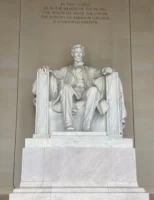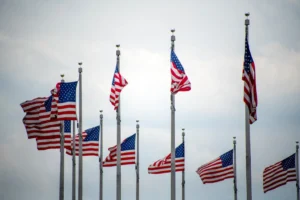
The White House vs. The Marble Palace: A Clash of Titans

Imagine a U.S. President, a man who had seen the country through the end of a world war and the dawn of the atomic age, so infuriated by a single economic policy that he tried to fire the man behind it.
This isn’t a plot from a political thriller; it’s a pivotal, real-life moment in American history that forever defined the power of the Federal Reserve.
In this article, you’ll discover the incredible story of President Harry S. Truman’s failed attempt to oust a Fed governor, the landmark legal battle that ensued, and why this decades-old clash is the bedrock of the central bank’s independence today.
Get ready to dive into a high-stakes drama where monetary policy, raw political power, and the Constitution collided.
The “Accidental President” and the Stubborn Fed Governor

The year was 1948, and America was caught between post-war optimism and the fear of a new economic downturn.
President Truman, facing a tough re-election campaign, was desperately trying to keep the economic engine humming.
He believed that low interest rates were essential to continue financing massive national debt and to support affordable loans for businesses and veterans.
But the Federal Reserve, led by Chairman Marriner Eccles and a resolute member named Thomas B. McCabe, saw things differently.
They were worried that keeping rates artificially low would fuel runaway inflation, a silent tax that would erode the savings of everyday Americans.
The Fed began to tighten monetary policy, directly contradicting the White House’s wishes.
The tension reached its boiling point in 1950 with the appointment of William McChesney Martin Jr. as Fed Chairman.
Despite being a Truman appointee, Martin agreed with his colleagues on the need for higher rates to ensure long-term stability.
Truman felt betrayed.
He saw the Fed’s actions as a direct threat to both the economy and his authority.
His frustration focused on one man in particular: a Fed governor named Thomas B. McCabe.
In 1951, after yet another disagreement, Truman had enough.
He demanded McCabe’s resignation.
When McCabe refused, Truman did the unthinkable: he fired him.
Or at least, he thought he did.
A Constitutional Crisis Over Interest Rates

Truman’s move was not just bold; it was arguably illegal, and it immediately sparked a firestorm.
The President believed his executive power gave him the authority to remove officials he had appointed.
The Federal Reserve Act, however, was deliberately murky on this point.
It stated that Fed governors would serve staggered 14-year terms, but it didn’t explicitly say a President couldn’t remove them before their term was up.
This legal gray area became a battlefield.
McCabe, with the full backing of the Federal Reserve Board, refused to vacate his office.
He argued that his position was designed to be independent of political pressure precisely so he could make unpopular but necessary decisions for the health of the economy.
The standoff escalated into a full-blown constitutional crisis.
It was a question that went far beyond two men: Did the President have ultimate control over monetary policy?
The issue was so contentious that it ultimately required a truce, known as the 1951 Treasury-Fed Accord, which formally freed the Fed from its obligation to directly support Treasury debt prices.
But the fundamental question of removal power remained unanswered—until it landed before the highest court in the land.
The Supreme Court’s Landmark Decision

The case, Wiener v. United States (1958), didn’t directly involve McCabe, but it revolved around a nearly identical question of presidential removal power.
The Supreme Court’s decision was a resounding victory for independent agencies like the Fed.
The justices ruled unanimously that President Eisenhower could not remove a member of the War Claims Commission simply because he disagreed with him.
p>They reasoned that when a agency’s functions are quasi-judicial or quasi-legislative—meaning they require impartiality and expertise, not mere political execution—the President’s removal power is limited.The Court declared that the independence of such bodies is vital to their mission.
This precedent cemented the legal shield around Federal Reserve governors.
It established that they are not ordinary employees serving at the pleasure of the President; they are officials appointed to fixed terms to exercise their best judgment, not the judgment of the current occupant of the Oval Office.
Truman had lost, and in doing so, he inadvertently won a much greater victory for American economic stability.
The Lasting Legacy of a Presidential Defeat
So, why does a political fight from over 70 years ago matter today?
p>Because the Truman-McCabe clash and the Supreme Court’s subsequent ruling are the very foundation of the Fed’s modern independence.This independence is what allows the Fed to make difficult decisions, like raising interest rates to combat inflation, even when those decisions are politically unpopular.
It creates a system where monetary policy is based on economic data, not on the electoral calendar or the whims of a president.
Every time a Fed chair testifies before Congress or faces pressure from the White House, the ghost of this historical battle stands guard.
It is a powerful reminder that the central bank’s autonomy is not just tradition—it is a principle defended and defined by the law of the land.
The next time you hear a debate about the Fed’s power, remember the president who tried to fire it and lost, securing its independence for generations to come.
It makes you wonder: would our economy be as stable today if he had won?
Preserving Precedent, One Page at a Time

So, how do experts untangle such complex historical and legal threads?
Imagine a historian, Dr. Evans, whose desk is buried under fragile news clippings and crumbling memos from the Truman era.
Her mission is to find a definitive precedent, but each time she handles a document, it risks falling apart.
This is where modern technology becomes the unsung hero of historical preservation.
She uses a powerful Document Scanner, the Brother ADS-1700W Compact Wireless Desktop Document Scanner, to digitize everything.
With a gentle whir, it transforms delicate, yellowed pages into crisp, searchable PDFs.
Suddenly, a keyword search for “Fed” across decades of archives takes seconds, not weeks.
This isn’t just about convenience; it’s about safeguarding the very evidence that protects institutional integrity.
By creating a permanent, organized digital archive, she ensures these critical precedents remain accessible for the next generation of scholars.
It’s a quiet, technological bulwark against the erosion of history, proving that some of the most powerful tools in governance aren’t found in the Oval Office, but on a historian’s desk.

Leave a Reply